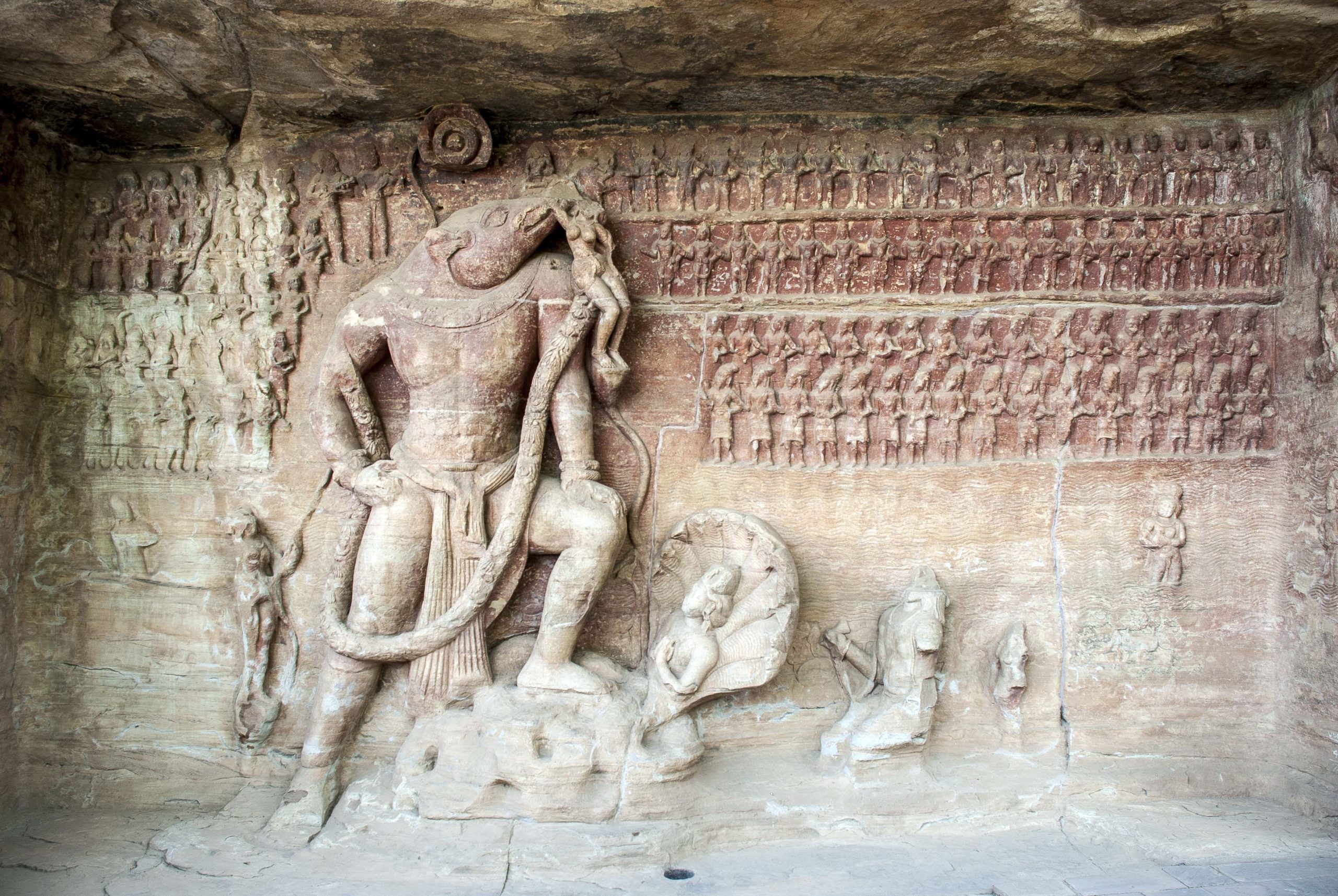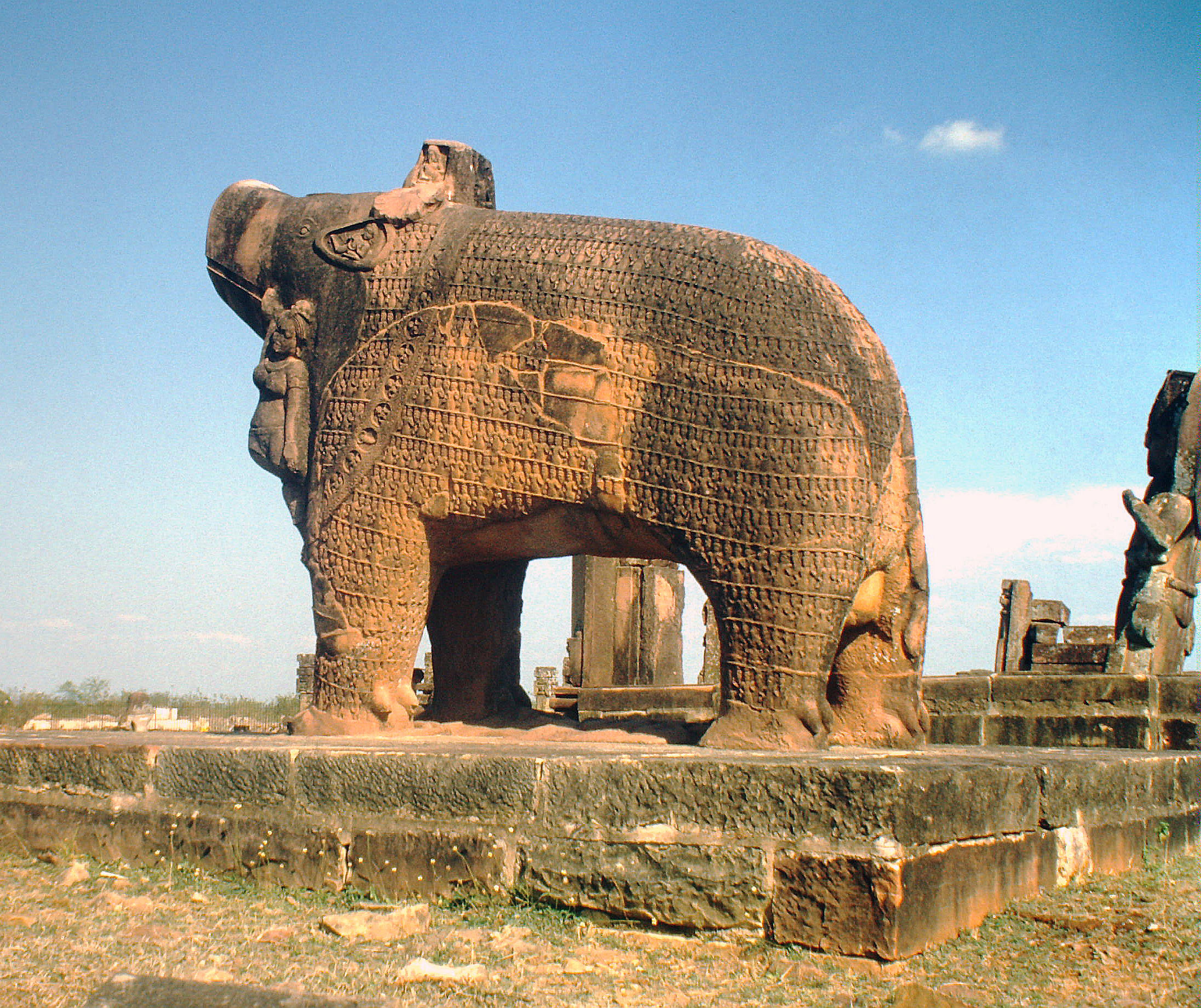The Varaha

Varaha panel, cave number 5, 5th century C.E., Udaigiri rock-cut caves, Madhya Pradesh (photo: Asitjain, CC BY-SA 3.0)
For my second blog post of the week I am going to be focusing on the Gupta period in south east Asia (c. 320 – 647 C.E., named for the Gupta dynasty). This empire was truly known for their advances they made in poetry and drama, as well as their magnificent discoveries they made in astronomy and mathematics. The biggest discovery was from the astronomer Aryabhata who came up with the theory that earth actually rotates on its own axis which would be calculated as a solar year at 365.3586805 days. On the other hand, some of the most influential creatives in Indian history were during this time period including the writer named Kālidāsa. Kālidāsa was known for his works that made other writers during the time strive to be better, as well as he influenced writers throughout history. Even today Indian historians use him and his influencers to learn more about their culture. It has been noted that the Gupta’s were mostly in belief of the buddha religion.
The specific piece I want to focus on is the Varaha Panel. The panel (as seen above) is of the man-boar avatar named Varaha. The panel can be interpreted as such, “The panel shows Varaha rescuing Bhudevi (goddess of earth) from a cosmic flood, a story that is recounted frequently in Hindu religious literature, including the Puranas.” Stated from smart history. Here Varaha is shown and depicted as a hero because he is posing regally with the goddess as she is hanging from the Varaha’s tusk. In the background you see a bunch of people standing in organized rows witnessing this event in awe. The people in the crowd include “gods, sages, and people” according to smart history. The Varaha played a very significant role in the Gupta dynasty. The Varaha was constructed in many different forms of art, aswell as in many different forms. The Gupta’s made wall panels like the one above, pottery, sculptures, and writings inside temples. Below is an example of a sculpture of the Varaha but in a different form. Here he is seen completely in boar form with no human anatomy included.

Varaha, 5th century CE, Eran, Madhya Pradesh (photo: ArnoldBetten, public domain)
Smart History Link: https://smarthistory.org/gupta-period/
Menon, Dr. Arathi, and Dr. Arathi Menon. “The Gupta Period.” Smarthistory, smarthistory.org/gupta-period/.

I was scrolling through the blogs looking for an interesting piece to read about when I came upon yours. The work you chose piqued my interest because you don't often see boars depicted as heroes. I must have missed this avatar of Vishnu when I was reading this week because I love it! Your blog inspired me to read more about Varaha. Apparently, there's a little more to the story because I also read that the demon, Hiranyaksha, stole Bhudevi and hid her in the primordial waters. Vishnu in the form of Varaha then swoops in, slays the demon, and rescues the Earth. This was an excellent and illuminating read. Well done!
ReplyDelete